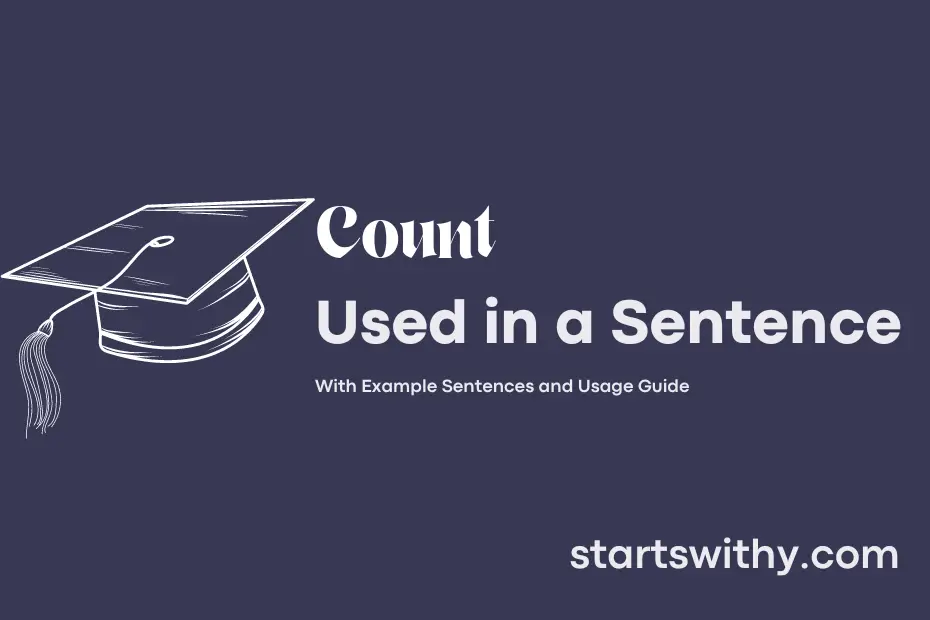Do you find it challenging to compose example sentences with the word “count”? The term “count” is a verb that typically signifies the act of determining the quantity or number of something. In English grammar, it plays a crucial role in providing clarity and specificity to our statements.
When constructing example sentences with “count,” we focus on accurately enumerating or tallying objects, actions, or concepts. Whether describing physical items, recounting events, expressing mathematical calculations, or emphasizing significance, using “count” helps convey precise information in writing.
7 Examples Of Count Used In a Sentence For Kids
- Count how many mangoes are on the table.
- Let’s count the number of birds in the sky.
- Can you count the red cars passing by?
- Count the stars you see in the night sky.
- Count the number of balloons at the party.
- How many pencils can you count in the box?
- Let’s all count together how many books we have in the classroom.
14 Sentences with Count Examples
- Make sure to count the number of pages required for each assignment.
- It is important to count your expenses carefully to stay within your budget.
- Count the number of references needed for your research paper.
- Don’t forget to count the number of words in your essay before submitting it.
- Double-check to count the correct amount of questions in your exam paper.
- Always count the number of hours you spend studying for each subject.
- Count the number of group members participating in the project to allocate tasks effectively.
- Remember to count the days left before your final exams start.
- It’s essential to count the correct number of credits needed to graduate on time.
- Consider and count the number of books required for each semester’s courses.
- Don’t forget to count the number of lab sessions you need to attend for each practical subject.
- Ensure to count the hours spent on extracurricular activities to manage your time effectively.
- Count the number of quizzes and tests scheduled in the upcoming weeks for each subject.
- Always count the number of presentation slides to ensure you cover all key points effectively.
How To Use Count in Sentences?
To use Count in a sentence, begin by identifying the object or concept you want to quantify. For example, “I need to count the number of apples in the basket.”
Next, insert Count into your sentence in the appropriate form. Depending on the context, you may need to adjust the verb tense or add supporting words. For instance, “She will count the money before closing the register.”
If you want to specify what you are counting, include the object after Count. For example, “Please count the books on the shelf.”
To make your sentence more specific, you can include additional information such as quantity or location. For instance, “I counted five birds at the park.”
Remember to pay attention to grammar rules, such as subject-verb agreement, when using Count in a sentence. Ensure that the verb form matches the subject, such as “He counts the stars every night.”
By following these steps and practicing constructing sentences using Count, you will become more comfortable incorporating this word into your writing and conversation.
Conclusion
In conclusion, understanding the concept of sentences with a count is essential for accurately conveying numerical information in a clear and structured manner. By using count-based sentences, one can effectively communicate quantities, statistics, and measurements in a concise and organized format. Whether it’s listing items, sharing data, or presenting facts, incorporating count sentences enables readers to easily grasp the numerical information being conveyed.
By mastering the art of constructing sentences with count, individuals can enhance the readability and comprehension of their written communication. Whether in a scientific report, a business presentation, or a simple email, the skill of crafting count-based sentences equips writers with a valuable tool for effectively expressing numerical values and facilitating understanding among various audiences.



